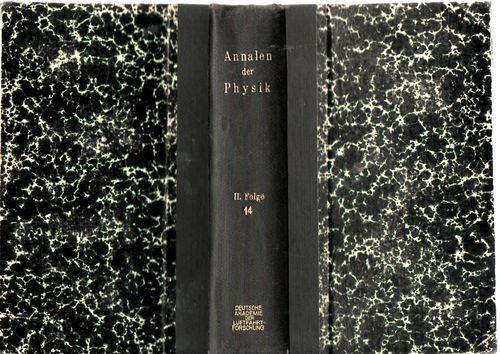JF Ptak Science Books
Leipzig, Johann Ambrosius Barth, 1828. Published in Annalen der Physik und Chemie in Band 14, Zweites Stück, 1828, appearing on pp 294-324. We offer the entire volume, pp viii, 628pp, six folding plates. The volume is bound in half-cloth and marbled boards. This copy is in VERY GOOD condition, and is from the library of Wright-Patterson Field, Dayton Ohio, and earlier from the library of the Deutsche Akademie der Luftfahrtforschung (Berlin, founded 1938/9 and active until 1944). There is another, older, contemporary library stamp on the title page, small (about 1 inch) oval, mostly faded away, though I can identify that the library was in Aachen.
Condition notes: this is a nice copy, with "Wright Field Library/Dayton, Ohio" rubber stamped on the page edges at top and bottom of textblock.
This is the first physical demonstration of atomism and the first time it appeared in German from the original English earlier that year.
"Brownian motion (named after the botanist Robert Brown) or pedesis (from Greek: πήδησις "leaping") is the presumably random drifting of particles suspended in a fluid (a liquid or a gas) or the mathematical model used to describe such random movements, which is often called a particle theory.
The mathematical model of Brownian motion has several real-world applications. An often quoted example is stock market fluctuations, however, movements in share prices may arise due to unforeseen events which do not repeat themselves.
Brownian motion is among the simplest of the continuous-time stochastic (or probabilistic) processes, and it is a limit of both simpler and more complicated stochastic processes (see random walk and Donsker's theorem). This universality is closely related to the universality of the normal distribution. In both cases, it is often mathematical convenience rather than the accuracy of the models that motivates their use. This is because Brownian motion, whose time derivative is everywhere infinite, is an idealised approximation to actual random physical processes, which always have a finite time scale."--wiki
Magie, "A Source Book in Physics" p. 251-255; Printing and the Mind of Man, # 290 (being the first edition in English paper from 1828); Sparrow, "Milestones of Science" # 31;





Comments